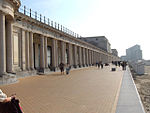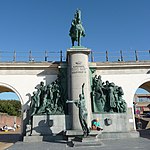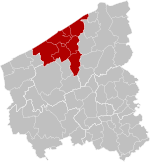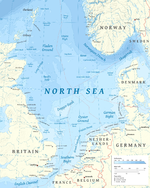Diaz Arena
Belgian sports venue stubsFootball venues in FlandersK.V. OostendeSport in OstendSports venues in West Flanders

Diaz Arena is a multi-use stadium in Ostend, Belgium. It is mostly used for football matches and is the home ground of K.V. Oostende. The stadium holds a capacity of 8,432. Before, it was called Albertpark but after the last renovation in 2016 the name was changed in the current name. Previous names include Albertparkstadion (until 2016) and Versluys Arena (2016-2020).
Excerpt from the Wikipedia article Diaz Arena (License: CC BY-SA 3.0, Authors, Images).Diaz Arena
Zwitserlandstraat, Ostend
Geographical coordinates (GPS) Address External links Nearby Places Show on map
Geographical coordinates (GPS)
| Latitude | Longitude |
|---|---|
| N 51.2169 ° | E 2.8865 ° |
Address
Versluys Arena
Zwitserlandstraat
8400 Ostend (Ostend)
West Flanders, Belgium
Open on Google Maps








